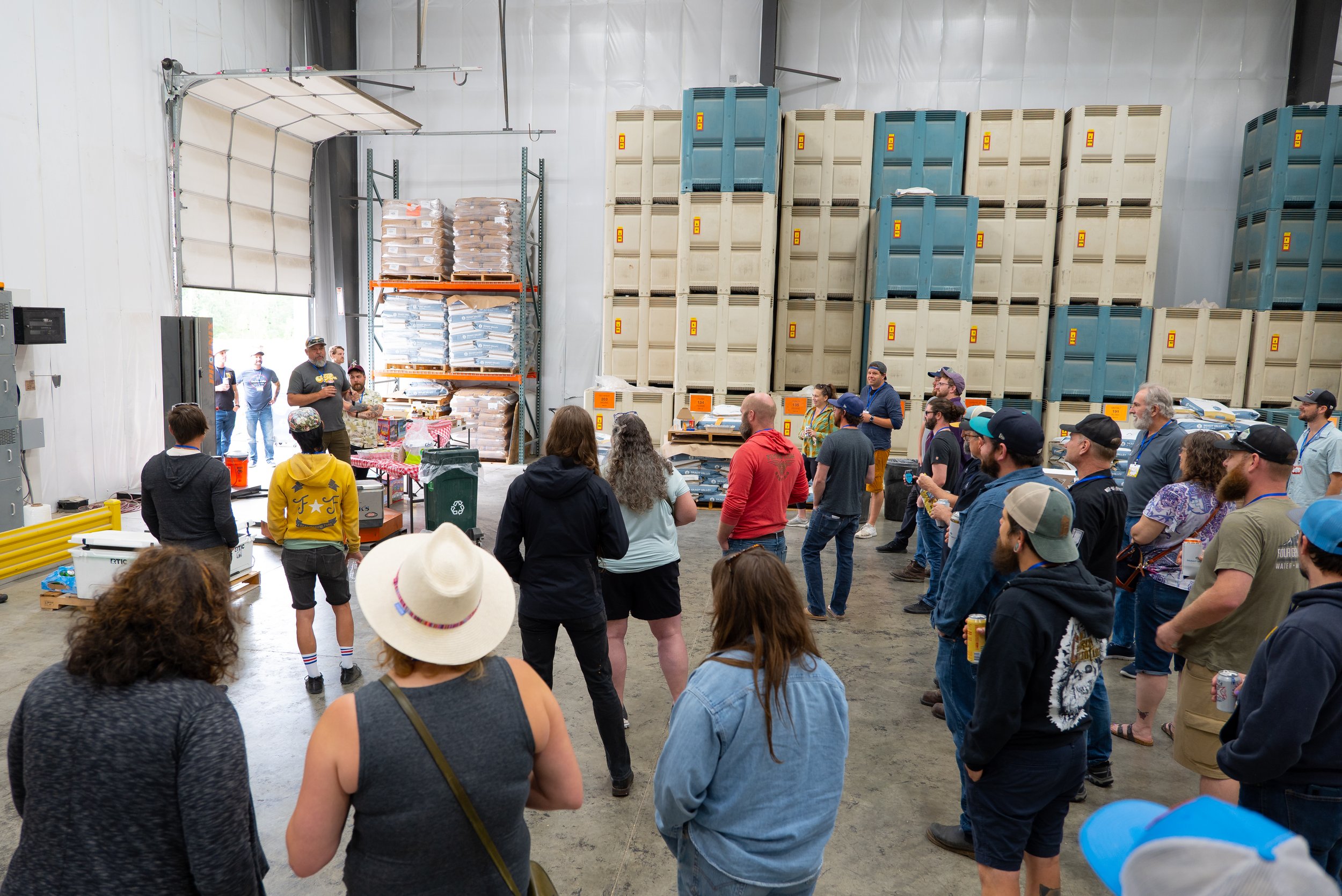With Spring rolling around, it feels right to be back at the Craft Brewers Conference. We joined our community of brewers in Nashville with an expectation of awesome music, community reconnection, and education. We were not disappointed. This year’s conference felt more like a CBC of old - nightly events packed to the brim with jovial comradery and some in-depth education that resonated with our team.
Washington Wild is on a mission to protect wild places in the state of Washington by bringing together communities around conservation. This mission is something agricultural processors, like us, care deeply about. One of the ways they do this is through the Brewshed Alliance - a group of over 90 brewers, processors, and other industry partners who gather together to help protect the biggest ingredient in beer, water.
Craft Malting is alive and well: our recent trip to the Craft Malting Conference in Portland Maine allowed us to learn about and explore what is happening in the broader malting world.
At the end of each year, we like to look back on all that happened, reflect, and put it together for our customers to see. This year was certainly one for the books!
Barley that was sown, grown, and malted together in an effort to build up the processes needed in a climate changing world.
Terramar Brewstillery is located in Edison, WA, 15 minutes from our malthouse. Since they opened, they have been producing beer, spirits, and cider on site using as many local ingredients as possible. They’ve recently won a series of medals for both beers and spirits, so we figured it would be a great time to revisit our customer profile and ask some deeper questions.
Our 2022 Harvest has been completed. This growing season brought about a lot of reminders that we work in agriculture and our barley is at the mercy, and benefit, of mother nature.
Peated malt is a point of pride for our team and is a shining example of their ability to take on unique challenges and create intriguing results. The dialogue between us and our customers drives our innovation into new ways to smoke and malt with peat. Learn about our process.
After the whirlwind that was The Craft Brewers Conference in Minneapolis, MN, we wanted to distill our key takeaways into a few points.
We’re about to embark on a deep deep conversation about Regenerative Agriculture with our growers and customers. Our conversation will be deep because of the things we’re putting in the soil, but also the need for connecting a lot of dots together.
One of our longest running partnerships has come from our neighbors and friends at Washington State University’s Breadlab. Not only is the lab just down the road from us, but the test plots are around the corner too. Founded in 2009 by Dr. Steve Jones to create an alternative to the commodity grain system and keep value where it’s produced, it currently employs 5 staff and 4 students.
When maltsters talk about Glycosidic Nitriles, what do they mean? What causes GN and should brewers and distillers be worried about it?
Each year, we contract with growers to plant some winter barley and they love getting it in early, before the ground is too soggy, and getting a head start on next year’s work. But what is the real difference between Winter and Spring barley varieties and how do these differences show up in the brewhouse?
At the end of each year, we take some time to reflect on where we started the year and what we accomplished as a company. 2021 was a year of adaptation and growth at Skagit Valley Malting. We scaled back a lot in 2020, so 2021 was spent playing catchup, increasing our production, and planning for the future.
Different places grow the same thing differently! A barley variety grown in the Skagit Valley will taste vastly different (and grow and look different) than the same variety grown over in Eastern Washington or Montana or Alberta.
A few weeks ago we had the privilege of showing Jeff Alworth around. Before he left for his book tour, he came up to do a deep dive into the world of Skagit Valley and craft malt more broadly.
Barley harvest is a busy time of year for our team, but once our silos are full we have to wait for grains to come out of their dormancy stage. We’re looking forward to seeing what this year’s malt ends up looking like, but if the raw barley looks as good as it does, we’re going to have an awesome year of malting!
Last week our team had the opportunity to tour the test plots with WSU Breadlab Wheat Breeder, Steve Jones. During this tour we were able to discuss the particulars in breeding wheat, barley, and rye. Each test plot is a trial for a number of different things and the variations in colors, heights, and growing vigor are really something to see.
Small Craft Maltsters have exploded onto the craft beer and distilling scene over the past few years. With this growth has come new flavor opportunities and products. If you’re still on the fence about Craft Malt, this post is for you. Here are 5 reasons why should you buy from a Craft Maltster compared to a larger malting company.
One of the most important tools a brewer receives from a maltster is the Certificate of Analysis or COA. The COA lays out lab tested information in a standardized format to help quantify exactly what is going on in the malt and help with any adjustments that may need to happen in the brewing process. We’re breaking down some of the our favorite aspects of a COA, but there are many more to dig into.



















